HIStalk Practice Interviews Erin Angelicola, Practice Manager, Marc Feingold, MD, LLC
Erin Angelicola is practice manager, Marc Feingold, MD, LLC, Manalapan, NJ
Give me some background on the practice, your physician, and yourself.
Dr. Feingold opened his practice in Manalapan in July of 2010. We went live with our electronic medical record in 2011 knowing that Meaningful Use was coming into place soon. We were a pretty young practice so everyone that works here is gung ho about technology. Everyone is computer savvy. We’ve got a pretty technologically- inclined office and a lot of our patients as well have embraced it as we’ve moved forward with athena and our patient portal.
You’re also using athena for billing, is that correct?
We use athena for virtually everything. We use the athenaCommunicator to communicate with our patients via phone call and for all of our reminder calls to patients to remind them they have an appointment. They do mass calls in the event that God forbid we had to close the office like in Hurricane Sandy. They also have a patient portal available with the Communicator. We use the Communicator portion to get patients their labs online, to give them access to the medical records, to check their weights, their blood pressure, and things like that throughout the year.
We use the billing portion called athenaCollector and they basically handle all of the billing issues that we have in the office. They handle all of our explanation of benefits from insurance companies and if there is an issue they won’t allow us to drop a claim. It will give us a head’s up not to drop this claim because a CPT code is wrong or ICD-9 doesn’t match the CPT code. It suggests that you should reevaluate this and gives us things you don’t really get from a regular billing company.
We also use the clinical portion of athena so all of our registration, all of our patient visits – everything – is logged into athena to track all of our quality management reporting.
Tell me about the selection process when you first began looking at systems.
We looked at about ten EMR companies. We looked at everything from free EMR companies all the way up to EMR companies who weren’t cloud-based but who put a huge server in your office and it cost hundreds of thousands of dollars. So we were all over the map as far as looking at EMRs and what attracted us to athena was we wanted to be able to access our patient records no matter where we were. Dr. Feingold is pretty young and is on the go constantly so he’s running between the hospitals, he’s running into the office, he’s back and forth constantly, and then he has an active social life so he’s out running around and dating. While he’s on his date he wants to be able to refill the patient’s medication without having to say, “Oh, I’m so sorry. I have to go home to refill my patient’s medication.”
It was nice to find the cloud-based EMR that worked with us and there weren’t at the time any EMRs that were cloud-based so athena was definitely a number one choice for us for that matter.
The fact that they were constantly evolving and showing us that they were doing their updates and they weren’t charging us for updates and things like that made it kind of a no-brainer, especially for a single practitioner. We had a low cost. We didn’t have to worry about laying out this huge sum of money right off the bat when we first opened the practice so that was kind of why we went with our EMR.
Tell me about the implementation.
The implementation from paper chart to EMR, no matter who you are, no matter who you choose, is a total nightmare. Athena gave us a “to go to person” and the go to person was available that morning, first thing in the morning from 7:00 am. They called and asked, “Are you ready? Are you ready to go live? Are you excited?” And we were like, “Oh, my God, we’re never going to get this done.”
We decided we were going to completely go live and not ease into it so we decided on January 2011 that we’d not use any paper at all whatsoever in the office ever again from that point forward. In theory sounded it really great but at about 2:30 in the morning, while we were still trying to go through and do our charting, it wasn’t as fabulous as it seemed.
But the best part was the fact that we did have our account manager there with us to answer all of our questions and at 10, 11 o’clock at night she was still available helping us through it. It’s a little impressive I have to say because we thought, oh, we’re screwed, we’re not going to be able to do this. But it turned out to be a great transition. It took us about a week to get into the swing of things and it did take us almost six months to fully scan all of our previous medical records, but we did get it done in a six-month period and everyone that we saw was electronic. We have not seen a piece of paper in the office then.
How long did it take you to get back up to full speed in terms of your practice load?
That is a good question. I think it took us probably about three months to get up to a full busy load, like 20 to 30 patients a day. I think in the beginning we were averaging about 16 patients a day and after about three months we got back up to between 20 and 30 a day.
What kind of devices does the physician and the other clinicians use to input information?
We just recently updated the office so we bought 27-inch touch screen computers for all of our rooms, along with our lab, the doctor, and all of the offices. Dr. Feingold also uses his iPhone and I use my iPhone to access athena so we can get to the patient’s chart, answer any questions, or refer to the specialist. If the specialist calls while he is grocery shopping he just takes his iPhone, pulls up the patient chart, and gives them whatever information that they need. Mostly it is just our mobile devices and then the touch screen computers in the office.
Does Dr. Feingold actually input his own chart notes?
He does. He adds all of his own chart notes. We do have, of course, in the registration process someone at the front desk putting in all the demographic things. We have the medical assistants who put in the patient’s history, so before Dr. Feingold even walks into the room, the patient’s entire history, their medication, their risk status, and things like that. All of that is inputted into our system before he even walks into the room and when he gets in there he does just his charting.
As you talk with other practices, do you think that it’s easier to implement an EHR with a solo physician office versus one with multiple physicians with varying personalities and ages?
No. And the reason I say no is because it really depends on how gung ho the office is on doing it. If you have a 10-physician practice and only five of those 10 physicians want to go EMR, you are going to have a problem, but if all 10 of them are willing to go for it and their staff is behind them you will not have a problem. It involves more scheming but of course they have more staff to do that.
Really in the scheme of things, it’s really all about what is the reason behind going to EMR. If you are doing it just for the money, like for Meaningful Use money, it’s not going to work for you. But if you are doing it because you really want to improve the function of the office and want to be able to give your patients better care, you are going to have everyone behind you. I really feel strongly about that. Athena supplies you with so much information there is absolutely no way that if you want to do this you can’t do it. I mean there is no way.
Tell me a bit about the Meaningful Use process, how you implemented any changes in workflow, how you tracked your progress, and the attestation process.
We did Meaningful Use almost two years ago so we’re actually in year three of Meaningful Use Stage 1. When we went through the process, we didn’t actually have to change much because Dr. Feingold is pretty good about his charting and the information is put into the EMR for you. We have a little quality management tab in our EMR that allows us to see what a patient is missing. In the quality management tab it warns you that this patient is a smoker, so you need to do tobacco cessation counseling, and it gives you everything that you need.
At the end of the year, all we had to do is click a button and sign. Well, we had to do risk analysis of the office as well, as far our technology is concerned. Really, it was pretty easy. It was just a click of a button. I understand from speaking to other offices and going to other meetings that it wasn’t as easy for other practices, but their EMR companies didn’t give them the tools that we have.
I understand that you’re participating in Medicare’s comprehensive primary care initiative. How has your technology helped you achieve program success with that?
We wouldn’t be able to do the program unless we had EMR. There is no question about it. The reporting requirements are insane. It is totally insane. We need to report on specific quality measures. We need to make sure that our patients are getting their mammograms, that they are getting their colonoscopies, that they’re getting their BMI scans, their weight loss is improving, that the blood pressure is under control, the cholesterol is under control. The quality measures that they give you are really quite extensive. It’s all things that doctors should be doing anyway but they really hold you accountable to it.
Without an EMR, I have no idea how any doctor could possibly be accountable for the information because you would have to go through every one of your paper charts and figure out if this one had colonoscopy, if this one had a mammogram, if this one have a bone density. There is just no way to go through all of that information without a computer. I mean I have no idea how anyone could possibly do it. I just have no idea.
With the CPCI program, there is a very long application process that we went through and once we filled out the application, we showed that we were really motivated to move forward with the program and that we were onboard. They gave us a list of requirements and being on EMR and having 24/7 accessibility by our patients was one of the requirements. Without an EMR we would never be able to do that. I have no idea how anyone could function without one participating in any of these programs.
How has the use of EHR impacted the quality of care that the practice provides?
We’ve seen quite a bit of improvement with the patients. When we first started EMR, our smoking cessation counseling was about 67 percent and we’re now up to 100 percent. We’ve increased our colonoscopies by about 17 percent, which doesn’t sound like a lot, but it’s huge enough in a practice because a lot of patients just don’t want to go and get a colonoscopy because of the hassle and the work involved. And, we’ve been able to diagnose three patients with early colon cancer and we were very fortunate that all three of them have undergone treatment and all of them are well or in remission.
We’ve been able to see all the information on the screen in front of us, so you can say, hey, this patient didn’t have a colonoscopy. You better go and get it done. Or hey, this patient didn’t have a mammogram, they really need to do this. The doctor can see that right in front of him and focus on that. It works the same with the vaccines and things like that. Just the preventative medicine that is in there helps us to really make sure that we’re catching things early so that the patients are not in end stage colon cancer by the time we’re treating them for something. It’s really made a huge difference in the care that we’re giving to our patients.
You mentioned the patient portal. Tell me what kinds of things you’ve done to encourage patients’ acceptance and use.
When a patient comes into the office for their visit, they fill out their new patient form and we give them a sheet that was actually provided to us from the EMR. We give it to the patient but now also say, “Hey, we have patient portal. This is how you access it and if you have any questions, let us know.”
There have been a few times we have had elderly patients that are in Medicare that are well over 70, 80, 90 years old and they will come in and they will sit down with me and I will spend time teaching them how to use the portal. It’s pretty easy. I mean if you can get on the Internet, you can use the portal. It’s just putting in a username and password and you’re in the system. They can access it to pay bills, they can access all of their information as far as their health is concerned, see any test labs. They can print out their EKG and take it to the cardiologist.
We explain this to them because a lot of patients don’t understand the value of the portal. They don’t want to be bothered with that. I explain that if the office is closed, you can go on to your patient portal, pull up your EKG, and take it with you at 7 a.m. or 8 a.m. to the hospital for your stress test. Or you can pull up labs if you’re up at three o’clock in the morning and you can’t figure out what else to do.
You can pull up your patient portal and see what your cholesterol was. It gives them 24/7 access to their records and then they can email us instead of sitting on hold on the phone. They don’t have to call the office anymore for their refills. They don’t have to call the office to pay their bills. They don’t have to call the office to ask a question about what their cholesterol was. All of this is available online. It gives them the opportunity to see how valuable it is when we explain it that way. Then they say, “Okay, maybe I will give this a chance.” It’s been useful.
Is the practice doing anything at this point to prepare for ICD-10?
Dr. Feingold is actually the only one who enters in the ICD-9 code besides myself so when it comes down to it, the two of us have been reading up on it. I had gone to the athena user conference over in Boston this year and took a couple of classes on the ICD-10 usage. Dr. Feingold has been taking a few classes over at the hospital as well to prepare. He’s been working with the medical records team to make sure that he’s ready to go but in the end, as long as the EMR is capable of doing it, all he has to do is type in the patient’s diagnosis and it pulls the code for us.
What kind of encouragement do you provide your peers and other practices that are perhaps fearful of implementing EHR?
There have been so many. They have been saying, “We’re just going to retire because we’re not going to be able to do this.” This is ridiculous. Dr. Feingold is a huge proponent of athena and his EHR. He has talked to a few physicians in the hospital and have gotten them on board. He says, “Hey, this is something that is going to help you out. It is going to save you money. You are going to be able to get rid of a couple of staff members if you need to or if you want to, because the EMR gives you the capability of doing so much more.”
We’ve gotten a lot of hesitation and there are a lot of people who are just upset about going electronic in general. They are not computer savvy. They don’t want to do it. Their nurse is 65 years old, 70 years old, and doesn’t want to deal with this stuff. And I say to them, well, maybe it’s time for a new nurse. That’s what it is. I mean you have to have your staff behind you and if your staff is not behind you, you are never going to be able to go live with an EMR. But if your staff is behind you and you need help, hey, call our office, we’ll be happy to help you. We tell everyone and we tell everyone in the hospital. There have actually been three physicians in our hospitals now that have gone live with the EMR that we have and every single one of them has been successful in implementing the program. I can’t imagine that anyone who isn’t really willing to do it couldn’t do it.

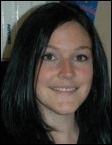

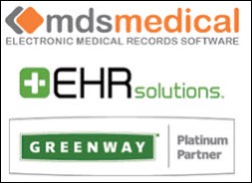
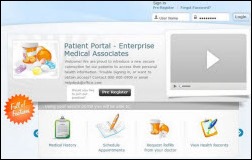


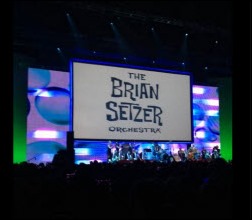
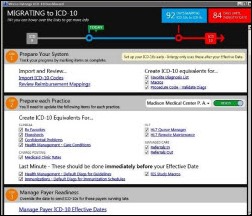

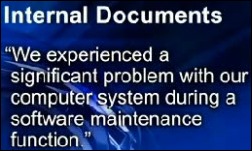
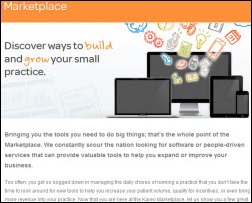
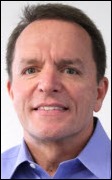

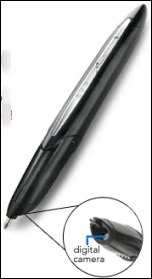

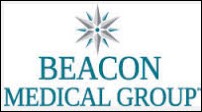
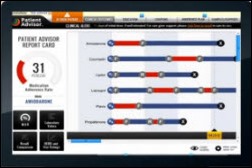

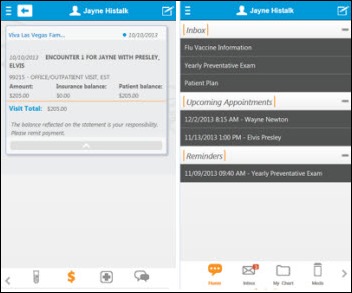

The article about Pediatric Associates in CA has a nugget with a potentially outsized impact: the implication that VFC vaccines…